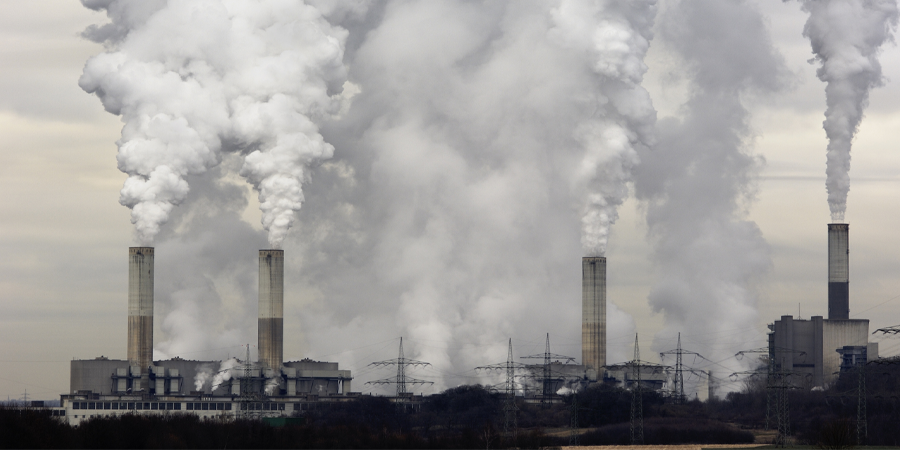Given the global instability and change in our world today, exploring the potential future design of our energy systems and their impact is more relevant than it has ever been. Decisions made on how a country or region generates its energy, like increasing the use of renewables, have very real effects that cascade through social, economic, and political dimensions. What about the countries whose economies are inextricably linked to coal, for example? The volatility of fossil fuel prices, underlined by global energy bill spikes following Russia's invasion of Ukraine, raises questions about the value of price stability and energy security.
In countries where energy sector subsidies keep consumer costs low, or support mining jobs that would otherwise disappear, further intertwine energy policies with economic strategies. This complexity prompts a critical question: how can we drive systems led change for our energy production and use, while maximising the benefits for all?
Carrots and sticks
In the age of electrification, the world faces a paradox, exemplified by current affairs in the USA: while policy decisions increasingly favour fossil fuels and cancel renewable energy projects, the economic realities suggest a different path. As recently as April 2025, the US administration announced a need to revive coal fired power in the USA to meet growing electricity demand, particularly that driven by the increasing use of AI. Despite these announcements and additional policies aimed at reviving coal, the fundamental economics of energy production remain unchanged.
Whilst coal prices have fallen significantly since historic highs in the spring of 2022, the volatility of other fuel prices remains a concern. This is not an incentive to revive the coal industry that the current US administration would want. Solar and wind technologies continue to be the most cost-effective means of generating electricity and investment flows are evidence for this. This economic advantage will ultimately drive the market, as companies will naturally gravitate away from drilling if the price dynamics continue to favour renewable sources.
However, the playing field remains heavily skewed in favour of fossil fuels. Comparing the operating costs of heavily subsidised fossil fuel exploration and generation with the capex and opex of unsubsidised renewable energy projects remains challenging. So too the technical challenges of managing a more diverse grid that relies more heavily on intermittent generation from a diversity of renewable sources, including wind and solar. Nonetheless, the economic and broader benefits of shifting away from fossil fuels are clear, including: new jobs, a smaller impact on our natural environment, new supply chains, cleaner air, lower public health costs, improved energy access to name a few. The clean energy transition still requires incentives (carrots) and disincentives (sticks) to accelerate the shift away from fossil fuels.
To ensure a successful transition, we must double down on investment routes that make renewable energy projects even more attractive and viable. The progressive removal of fossil fuels subsidies is a critical stick to create a level playing field from an investment perspective. However, if global policy shifts begin to roll back on the critical lever of disincentivising the exploitation of fossil fuels, a stronger focus on the use of carrots might be needed, particularly by governments, system operators and regulators of power sectors.
The importance of taking a systems approach
Adopting a systems approach is essential to maximise the benefits and minimise the impacts and costs of change. It ensures all aspects of the energy transition are considered — from generation, transmission, distribution to consumption. By integrating various parts of the energy system, we can achieve more efficient and effective outcomes, creating new jobs and reducing redundancies through retraining and reskilling.
This approach also helps in identifying potential synergies and addressing challenges comprehensively, leading to a smoother and more sustainable transition. For example, does future energy planning maximise the benefits of distributed generation, where generation sources like solar are built close to where they are needed? Does it promote system flexibility to ensure power is generated and used when it is needed, or changes in demand are curated to flatten peak demand periods? Are the latest innovations being leveraged to help balance the system and minimise system costs often associated with high levels of intermittent generation?
The economic benefits shine through
Local politics and energy requirements play a crucial role in shaping the energy landscape and therefore an energy transition. Local governments are often more attuned to the specific needs and preferences of their communities, allowing for tailored solutions that address unique challenges, whether that be the need for power at peak times, heating, cooling, or even pressurised heat and steam for industrial processes.
Furthermore, local policies can drive innovation and investment in renewable energy, creating a supportive environment for sustainable development. Pakistan's recent rooftop solar PV boom is an example of a local need driving investment with policy makers working to catch up.
By aligning local energy requirements with available renewable resources and with broader national goals, we can ensure a cohesive and effective transition to a renewable energy future that maximises energy security, affordability, access and our impact on the planet. There are clear trade-offs, but the economic benefits will shine through, not to mention improved air quality and health, job opportunities, expansion of supply chains for renewables and improved industry efficiencies.
The power of storytelling
Storytelling plays a crucial role in this transition. We are not shifting to renewable energy solely because it is cheaper, but because it offers broader benefits for society and the planet. It opens up economic opportunities, improves access to energy and enhances energy security.
This narrative needs to be communicated at both grassroot levels and among decision-makers, sharing best practices from other markets while acknowledging that solutions may vary by context. This includes tackling myths such as that power systems must be run by baseload power provided by thermal generation. As we are starting to see in the UK and elsewhere, power systems can be run predominantly by renewable energy providing continuous power from a diverse set of generation sources and that story needs to be told.
Ultimately, prosperous future economies will rely on renewable energy, but local policies are necessary to support this transition. By fostering a supportive policy environment and leveraging the inherent economic advantages of renewables, we can navigate the complexities of the age of electrification and build a sustainable future for all.






